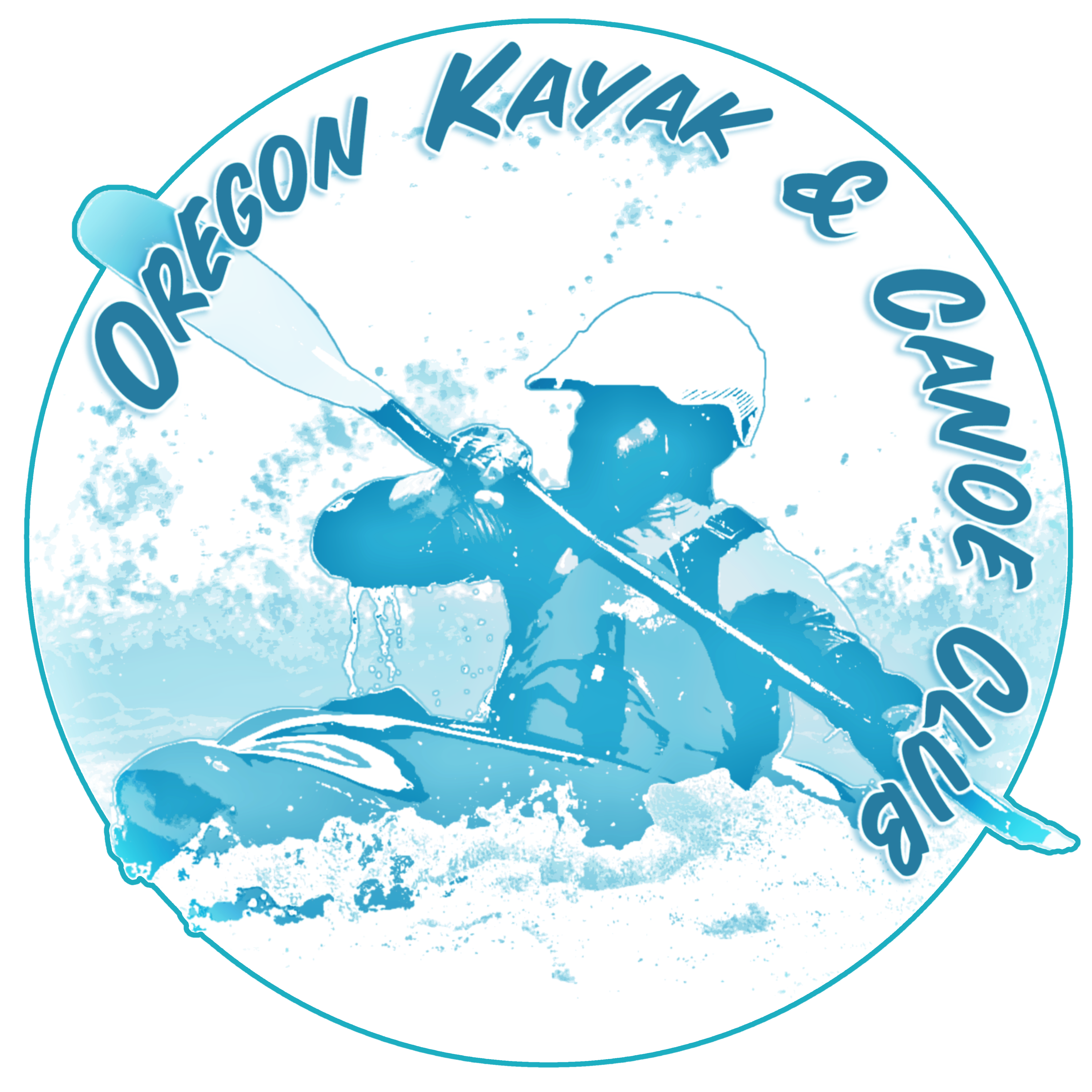Kayak Polo & Slalom
The OKCC proudly helps support diverse kayaking disciplines in the metro region including the Portland Kayak Polo Team and the Slalom Gates at Bull Run. Read on for more information.
The Portland Kayak Polo Team
A great way to enjoy a friendly game and improve your paddling. The team plays indoors during the winter and outdoors in the warmer months, making for year-round fun!
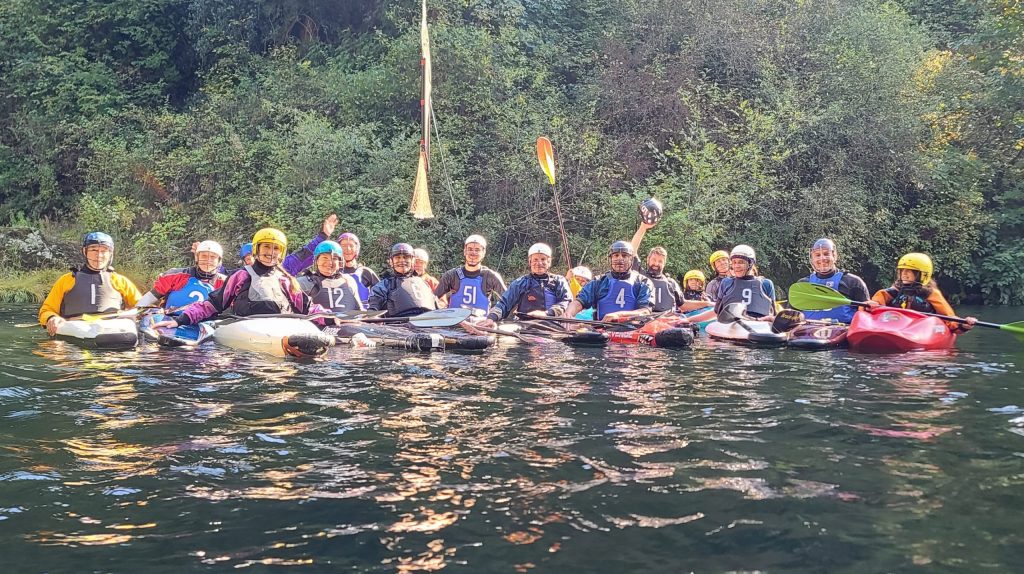
Kayak polo, or canoe polo as it’s called in other parts of the world, is a fast paced game of 5 vs 5 in kayaks with the objective of getting a water polo ball into nets suspended 2 meters in the air. You can use your hands or your paddle to pass, dribble or shoot the ball. Boat to boat contact is part of the game as is pushing over an opponent in possession of the ball. (If you don’t have a roll don’t worry, we won’t push you over.) The general game play is a combination of soccer, basketball, hockey and water polo.
No prior experience or specialty gear necessary. If you’re fully vaccinated, come get in on the game!
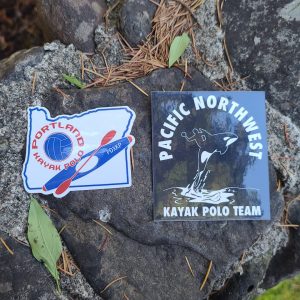
The 2021/22 outdoor season has wrapped, but will return late spring or early fall of 2022. Updates on the schedule will become available as the season approaches.
The current season is expected to resume : Oct. or Nov. 2021-Spring 2022 (Covid restrictions permitting)
Practices will be held at the Tualatin Aquatic Center, 22380 SW Boones Ferry Rd, Tualatin, OR 97062 on Saturdays, from 4:00-5:45 pm
For more information about joinging the Portland Kayak Polo Team or the practice schedule, please contact:
- Amy Carlson: carlson.amy@hotmail.com
- search for “portland kayak polo” on Facebook
- visit www.portlandkayakpolo.com
The Slalom Gates at Bull Run
Originally hung over 15 year ago, the gates at Bull Run were once used year round. In 2007 the PGE powerhouse was decommissioned, allowing the Bull Run river to flow naturally. The gates are are now used only part of the season at river flows between 450 cfs (rocky) and 1800 cfs on the USGS Bull Run near Bull Run gauge.
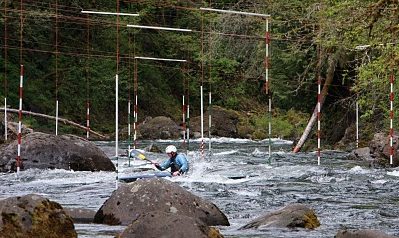
In slalom racing, kayakers & canoers attempt to negotiate a course made up of 18-25 downstream and upstream gates. Gates are defined by two poles spaced about 1 meter apart and hanging about 30 cm above the water. The paddler is timed from the start to the finish (last gate), and penalties are added to the elapsed time for touching a pole (2 sec) or missing a gate (50 sec). Much of the time elapsed involves entering eddies, paddling up through upstream gates and getting the boat out into the current. The power is in the water. It’s all about where you put your boat, not strength. Racers are given two runs, and the best run counts.
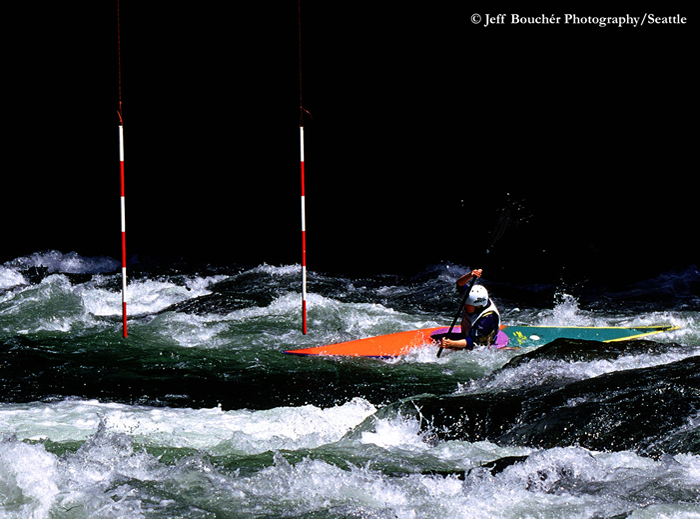
Practicing on gates builds boating skills. This is equally true for those paddling a plastic creek or playboat as for those in a slalom or longer boat. You learn to enter eddies crisply, exit them in various attitudes, cross the river, front-ferry, back-ferry, and generally move your boat around. you can modify the course by moving gates to test various skills. Importantly, missing a move is not harmful, e.g. you do not hit a rock and pin. Instead the pole swings harmlessly out of the way. You can practice different moves with others, giving input and coaching.
To get started, you should have a solid roll, as there are sharp rocks in and below the course, A swim here could be painful or even dangerous. Please contact Rufus Knapp or David Johnson before using the gates. You must me taught how to work them, and how to return them to their home position so they don’t get destroyed during high water.
For more information about accessing the gates, or for the current year's race schedule, please contact:
- Rufus Knapp: rufusk@comcast.net
- David Johnson: johnsoda7@hotmail.com
- visit nwwhitewater.org

